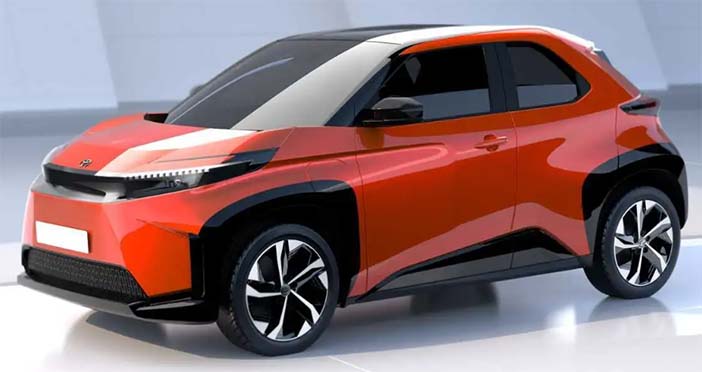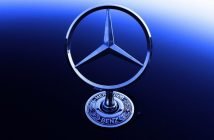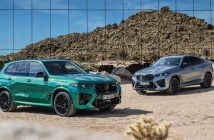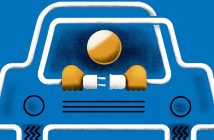+++ With the M3 Touring, BMW fulfilled one of many dreams: a relatively small and mighty powerful estate that can be used as a family vehicle but can be also taken to the track. If you are looking for an even more powerful long-roof M3, the Munich-based company might answer your needs again: a M3 CS Touring is currently being developed. The more hardcore estate has already been given the production green light and we will see it in full and official form in 2025. It will reportedly feature the same improvements as the M3 CS saloon, including the 3.0-litre S58 twin-turbo inline-6 engine with an output of 550 hp and 650 Nm of torque. According to the preliminary information, the M3 CS Touring will also receive carbon fibre tweaks in the front fascia, a new rear diffuser and a rear spoiler. There will be a minimal reduction in weight, comparable with the 35 kilograms that the M3 CS saloon lost compared to the M3 Competition xDrive. Speaking of xDrive, the go-fast estate is expected to send the power from the 3.0-litre mill to all 4 wheels through an 8-speed automatic gearbox. BMW is also working on another CS member that will complement the M3 CS saloon and the potential M3 CS Touring. The M4 CS is expected to sit between the regular M4 and the hardcore M4 CSL, featuring the same straight-six engine as the M3 CS saloon. Exterior enhancements and a small weight diet will also be part of the CS package. As for the M3 CS Touring, it is expected to be launched in limited numbers. Fewer than 2,000 units are planned for production globally. +++
+++ In EUROPE , August sales of fully electric and plug-in hybrid cars saw a noticeable increase, reaching their highest market share so far this year. According to data, 270.356 new plug-in electric cars were registered in Europe 2 months ago, about 68 percent more than a year ago. That’s about 30 percent of Europe’s total total volume. The fully electric car segment expanded even quicker with a surge of 106 percent year-over-year to 198.000 units, taking more than one-fifth of the market (22 percent). That’s about 3 times more than in the United States. PHEV sold 72,000 times and had a 8% market share. So far this year, 1.945.828 passenger plug-in electric cars have been registered in Europe (up 35%), which is about 23 percent of the total market. BEVs sold 1.28 million times and had a 15% market share. PHEVs did 0.64 million, which meant 8% market share. For reference, in 2022, more than 2.6 million new passenger plug-in electric cars were registered in Europe (about 23 percent of the total volume). The Tesla Model Y noted a very strong month with 21.824 new registrations in August and once again securing the first position among rechargeable cars in Europe. Interestingly, the Tesla Model 3 also had a stellar month with 11.998 new registrations, beating the top Volkswagen Group MEB-based models like the Volkswagen ID.4 (8.439), Skoda Enyaq iV (8.075) and Volkswagen ID.3 (6.878). Nonetheless, it’s worth noting that Volkswagen’s BEV sales improved recently. The rest of the 10 bestsellers are the MG 4 (6.733), the Dacia Spring (5.973), the Fiat 500e (5.847), the Audi Q4 e-Tron (5.442) and the Cupra Born (5.205). After the first 8 months of 2023, the Tesla Model Y (171.914 sales) remains a lone leader, while the Tesla Model 3 (60.902) returned to second position, slightly ahead of the Volkswagen ID.4 (58.853). Further down the top-10, we see the Volvo XC40 (33.034 BEVs + 19.296 PHEVs = 52.330), the Volkswagen ID.3 (46.589), the Skoda Enyaq iV (45.562), the MG 4 (44.507), the Fiat 500e (43.260), the Audi Q4 e-Tron (42.267) and the Dacia Spring (38.923). Tesla remains the most popular plug-in car brand in Europe, by registration volume, while the Volkswagen Group is beyond reach for any other automotive group (when counting BEVs and PHEVs together). The top brands by share in the plug-in segment in January-August were: Tesla – 12.3%, Volkswagen – 8.7%, BMW – 8.1%, Mercedes-Benz – 7.4%, Volvo – 5.7% and Audi – 5.3%. The top auto groups by share in the plug-in segment in January-August were: Volkswagen Group – 20.4% share, Stellantis – 14.0%, Tesla – 12.3%, BMW Group – 9.7%, Hyundai Motor Group – 8.5%, Mercedes-Benz Group – 8.3% and Geely–Volvo – 8.1%. +++
+++ It’s been a minute since we heard anything about HONDA ’s hydrogen ambitions, but the automaker is still, well, ambitious. A fuel-cell CR-V is coming for 2024 and camouflaged prototypes have been spotted in Japan and the US, where it will be offered for sale. I use the word camouflage loosely in this case, at least for the SUV caught on camera in Japan. Posted on X (formerly Twitter), a CR-V-sized vehicle was found in a parking lot wearing a bright blue body wrap. The face is different from the current model; there are large corner vents in the fascia and it rocks a split grille design with the upper portion being nearly as thin as the CR-V headlights. Honda makes no attempt to hide its bold badge. The backside is also a bit different, notably due to a lack of exhaust outlets. That’s how I know this is a fuel-cell vehicle, and also, the word hydrogen is splayed across the body wrap. I love it when automakers make things easy for me. It’s worth mentioning that, though I’m labelling this car the CR-V right now, that may not be the actual name. When Honda announced plans to build this fuel-cell SUV, the automaker was keen to say it’s based on the CR-V. That said, now that we’ve seen prototypes in public, there’s no doubt the ties run very close to the popular people mover. In profile it looks just like a CR-V, and this size fits as well. A Honda CR-V Clarity perhaps? Time will tell. Moreover, this electric SUV won’t simply run on hydrogen. Honda stated its new fuel cell will also have plug-in capability to charge a battery like a traditional EV. The size of the battery and its range are as yet unknown, but in theory, it will help curb hydrogen anxiety in a world where a hydrogen refuelling infrastructure is virtually non-existent. Given the immense costs of building that infrastructure, it could remain that way for some time. That isn’t stopping Honda from charging forward in the hydrogen world. The fuel cell for the CR-V has double the durability at one-third the cost of the system used in the Clarity. It’s co-developed with General Motors, and earlier this year, Honda mentioned working on a future fuel cell system that further improved on the one that hasn’t debuted yet. Ambitious, indeed. Honda is committed to bringing its hydrogen fuel cell CR-V (or whatever it’s called) to market in 2024. The fuel cell powertrain will be manufactured at Honda’s plant in Ohio, with the SUV sold in Japan and North America. +++
+++ MAZDA is the next Japanese automaker to announce its lineup for the upcoming Japan Mobility Show where it will put the focus on the MX-5. The recently unveiled ‘ND3’ will be there, alongside a first-generation model known by enthusiasts by its ‘NA’ codename. There’s also going to be a two-thirds scale MX-5 model for kids to get an idea of what it’s like to drive the beloved sports car. The lesser-known MX-5 SeDV will be there as well. If the acronym doesn’t ring a bell, it refers to a Self-empowerment Driving Vehicle created specifically for people with disabilities. It has been around for many years and comes in both standard and RF flavours, fitted with a lever that replaces the accelerator and brake pedals. It even allows one-hand steering achieved courtesy of a knob mounted on the steering wheel. There’s also a special passenger seat to store the wheelchair. The highlight of Mazda’s booth at the 2023 Japan Mobility Show is going to be a “new concept car designed to symbolize the exhibit theme”. For the time being, we’ll have to settle for the sole teaser image at the top. By the looks of it, the rear design bears a resemblance to the Vision Study concept we saw in the second half of November last year. Those split taillights look almost the same, flanking prominent ‘Mazda’ lettering. The 2 parallel lines below are slightly tilted whereas on the 2022 concept, they were straight. When the Vision Study was briefly shown last year, the Zoom-Zoom company said that “it is intended to demonstrate the brand’s commitment to enjoyable cars”. Reading between the lines, it was Mazda’s ways of saying the MX-5 is sticking around, despite increasingly stricter emissions regulations endangering sports cars. Earlier in 2022, Mazda Europe’s head of product development and engineering, Joachim Kunz, said: “It looks like we will have this car forever, with this size and concept and combustion engine”. However, he did admit there will come a time when the company will have no other way but to electrify the car. It remains to be seen whether this new concept is a preview of the next-generation MX-5. Even if it is, the ND3 was just revealed in Japan, which means the current roadster/coupe will remain in production for at least a couple of years. Consequently, we are not expecting the new model to go on sale sooner than 2026. The 2023 Japan Mobility Show is set to star on 25 October with the first press day and end on 5 November with the last public day. +++
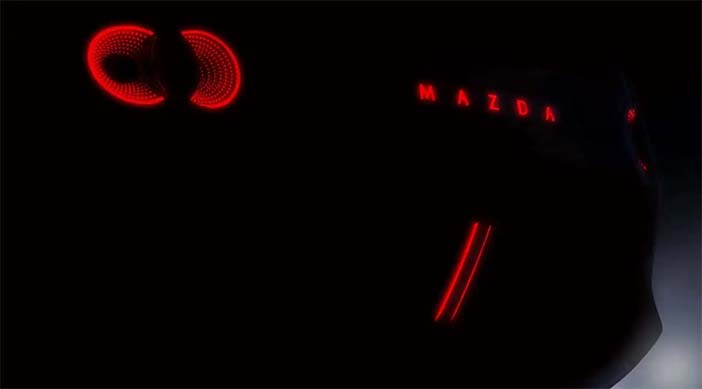
+++ In a recent interview, MCLAREN ’s boss, Michael Leiters, shed light on the automaker’s electrification strategy, revealing that full-electric supercars are still a few years away. This isn’t the first time that we hear about the brand’s conservative EV approach and according to Leiters, the key challenge lies in developing technology to make batteries lighter while ensuring a sufficient range. Speaking to media representatives in Dubai, Leiters emphasised the paramount importance of weight in the company’s design ethos. He asserted that heavy cars compromise nimbleness and create a sense of disconnection for drivers, which is contrary to the essence of McLaren’s brand identity. “I don’t expect this technology to be ready for real supercars before the end of the decade”, he summarized. In a separate interview in August, Leiters said very similar things, stressing the importance of limiting the weight penalty imposed by batteries. Also, McLaren’s boss emphasised that whatever the supercar manufacturer’s engineers create must surpass equivalent internal combustion engine models in terms of power, performance, and handling. This ambitious undertaking, he projected, may lead to the release of an EV hypercar “maybe at the end of the decade”. Leiters also hinted at McLaren’s potential foray into the SUV market, acknowledging the evolving automotive landscape. However, the primary focus remains on plug-in hybrid models, as internal combustion engines continue to dwindle in relevance. But before an SUV is even considered, McLaren wants to return “on the right road to profitability”, as Leiters said in Goodwood earlier this year. During McLaren’s global dealer meeting in April, some company executives discussed what future products the brand has planned. The automaker told attendees at the conference to “stay tuned” for a new class of vehicles with 4 seats and 4 doors in 2028. This is likely the SUV that McLaren is not ready to launch yet. +++
+++ Formerly known as the Tokyo Motor Show, this year’s Japan Mobility Show is shaping up to be quite exciting as many domestic automakers will be there to unveil interesting concepts. SUBARU has announced its presence at the Tokyo Big Sight exhibition center to show the Solterra, Crosstrek and 2 versions of the newly launched Layback, one of which will be fully accessorized. In addition, a Forester special edition will attend the show. The real highlight at Subie’s booth won’t be the Layback jacked-up estate but rather this intriguing Sport Mobility Concept. It appears to be a 2-door coupe with futuristic styling, square wheel arches and cameras instead of side mirrors. Representing the company’s badge, the cluster of 6 stars part of the Taurus constellation lights up. We can also notice illuminated C-shaped elements at the top of the windscreen, presumably related to driver assistance systems and self-driving tech. Technical specifications are shrouded in mystery, but Subaru does say the concept has a purely electric drivetrain. I’m being told the Sport Mobility Concept delivers the “pleasure of going anywhere, anytime, and driving at will in everyday to extraordinary environments”. The ‘anywhere’ part could be a subtle hint of all-wheel drive, which would imply a dual-motor setup. Whatever this is, it “evokes the evolution of the Subaru Sport values”. We’ll know what’s what on 25 October when Subaru will hold a press conference on the first press day of the Japan Mobility Show, which will open its doors to the public on the 27th. The show will end on the 5th of November. Speaking of Sport-badged cars, Honda is also attending the event to introduce the Specialty Sports Concept. The old Tokyo Motor Show was jam-packed with concepts but few have seen the light of production day, and this tradition is likely going to continue with the renamed show. +++
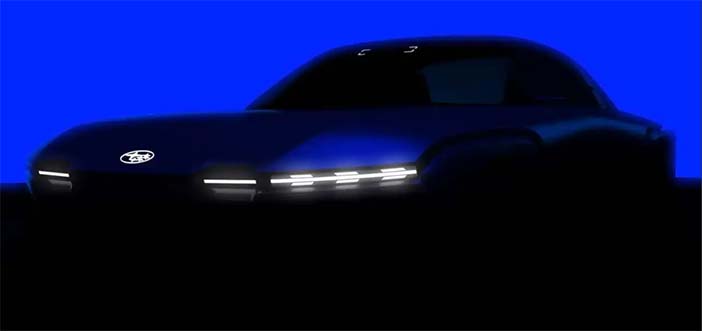
+++ Ever since the facelifted TESLA MODEL 3 (also known as the “Project Highland” Model 3) debuted at the end of August, the refreshed version of the Austin-based company’s cheapest car has made its way to several car shows in Europe, and this last weekend it was even part of a Tesla owners club event in France. As you can see on the photo below, a red Model 3 was revealed to dozens of brand enthusiasts who were probably eager to check it out in detail. Parked next to a Model S and a Model X, the smallest car in the American EV maker’s portfolio was previously shown at the 2023 edition of the Salon Automobile Lyon, where Tesla also showed the Model Y. In Europe, the Model 3 is among the best-selling plug-in cars. From January to July, it ranked third overall on the Old Continent, with 48.904 units sold; outranked only by the Volkswagen ID.4 and the Tesla Model Y, so it’s safe to say that the entry-level EV is one of the most popular zero-emissions cars in Europe. At the same time, Tesla vehicles are by far the most popular EVs in the United States, having sold an estimated 325.291 cars in the first half of the year, whereas the next 19 brands combined managed to push a smidge under 215.000 EVs in the same period. With so many cars on US roads, Tesla’s decision to postpone the refreshed Model 3’s launch is difficult to understand. In Europe, the first deliveries are expected to begin this month, with thousands of brand-new cars spotted in Chinese ports waiting to be shipped, but as far as the US is concerned, they still don’t know when the Elon Musk-led manufacturer will begin production of the so-called Model 3 “Highland”. One theory is that it may be revealed on American soil during the Cybertruck delivery event, but there is no official information to confirm this. Come to think of it, the Cybertruck event date is unknown, too, with the previously mentioned end-of-quarter estimate having come and gone. With this being said, though, Tesla isn’t sitting on its laurels, as there has been at least one sighting of the refreshed Model 3 on US roads after the car’s reveal in Europe. +++
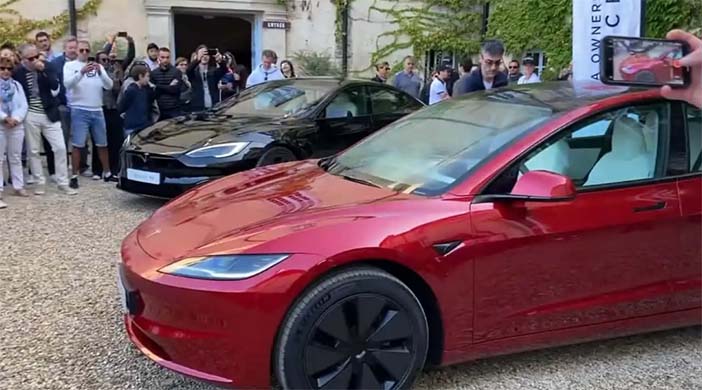
+++ TOYOTA has big plans for its future electric vehicle lineup, and has made sure the world is aware of that by making multiple announcements in recent months. The Japanese automaker said earlier this year that it aimed to launch 10 new battery-electric vehicles by 2026, when its annual production of BEVs should hit 1.5 million. The company previewed more than a dozen Toyota and Lexus EVs in December 2021, but it remains to be seen how many of those concepts will reach production. Toyota may also be working on a small electric vehicle; the smallest yet in its BZ series of EVs. Toyota is developing the small EV with Suzuki which badly needs EVs in its lineup. Toyota and Suzuki are working hard developing the small electric car with the goal of releasing it in 2025. The small EV will have a similar size to the 3.68-metre long Aygo X. You may recall that among the 15 EV concepts Toyota previewed in late 2021, there was one labeled “small BZ electric crossover”, which actually looked a lot like the Aygo X. There’s a chance this concept previews the future small EV that Toyota and Suzuki are reportedly collaborating on. Why Suzuki, though? For starters, Toyota and Suzuki have an existing partnership to develop compact EVs, and last year they announced they would solidify it. The 2 companies are also involved in a joint project to develop a new EV platform for a series of mini electric vans, announced in May 2023. Suzuki currently lacks EVs in its lineup but previewed its first EV in January 2023 with the eVX crossover concept. The Japanese automaker is the global leader in small cars, with 1.31 million units sold in 2022, according to JATO Dynamics. Back to the small EV project, it’s worth noting that Toyota registered the ‘FT-3e’ name last week. The brand has used the ‘FT’ prefix (which is an acronym for ‘Future Toyota’, for concept vehicles in the past, which likely means FT-3e is the name of a concept. You probably recall that in 2017, Toyota unveiled the FT-4X concept, which was said to preview a future compact off-road SUV that Japanese media reports claim will be arriving next year as a mini Land Cruiser. It’s difficult to say what future vehicle the FT-3e concept will preview, but the last letter in the name could hint at it being all-electric. As for the ‘3’ in the name, it may suggest its size, i.e. the fact it’s a bit smaller than the BZ4X. We’ll hopefully learn more about Toyota’s FT-3e concept at the Japan Mobility Show that kicks off October 26. +++
